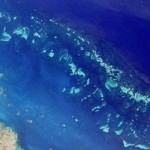Chicago – A troubling picture of climate change impacts ravaging western North America is emerging at high elevations where an important species is rapidly disappearing. This week a groundbreaking report from the Natural Resources Defense Council (NRDC) and a key Endangered Species List decision both pointed to growing danger that the Whitebark Pine Tree could become functionally extinct before the end of this decade, severely impacting many American and Canadian forests, and potentially downstream fisheries and communities. The new report shows that over 80% of the whitebark pine forests of Wyoming, Idaho, and Montana are already dead or dying.

“The red and grey trees littering the western landscape are a testament to the fact that North America’s forests are under assault,” said Louisa Willcox, senior wildlife advocate for NRDC and one of the minds behind a new report on whitebark pine mortality in the Greater Yellowstone Ecosystem. “Climate change is hitting the whitebark pine hard by allowing mountain pine beetles access to previously inhospitable forests at higher elevations. Whitebark, which grows from roughly 8500 feet up to treeline, has never had to fight off a threat like this, and if we don’t act quickly, we could lose this essential tree species.”
Whitebark pines can be found from Nevada to British Columbia (including the high Sierras of California, the ranges throughout the Greater Yellowstone Ecosystem, the Cascades and Olympic Mountains of Washington state, and beyond). Scientists regard the tree as a “foundation species” because of its importance in creating the conditions necessary for other trees, plants and animals to become established in the harsh alpine ecosystem. Whitebark pine is also considered a keystone species, because its health is a measure of the integrity of the whole high-elevation ecosystem.
Unfortunately for those dependent wildlife species, such as squirrels, chipmunks, grosbeaks, crossbills, and grizzlies (especially in Yellowstone) as well as other creatures, whitebark pine forests are being decimated throughout their range by an array of threats that have emerged in high-elevation environments, as a result of climate change, particularly now swarming mountain pine beetles, as well as an invasive non-native disease, blister rust. The threat of beetles is not uncommon in western forests at lower elevations, such as lodgepole pine and Douglas fir, which have co-evolved with these native insects.
However, global warming has only recently allowed beetles to flourish in high-elevation whitebark pine forests, where the trees have not evolved strong defenses. Until recently, harsh winters have kept mountain pine beetles (which are the size of a grain of rice) at bay. Warmer temperatures have dramatically increased the beetles’ numbers and allowed them to move upwards to attack the whitebark pines, a number of which have been made more susceptible due to weakening by blister rust. The result is the loss of more than half of historical whitebark stands across their range, with far worse numbers in some areas. In the eastern portion of the Greater Yellowstone Ecosystem, for example, whitebark pine forests have been already functionally lost.
Northern Rockies Mortality Report
Whitebark pine forests have been hit particularly hard in the Northern Rockies. NRDC and the US Forest Service helped fund an unprecedented aerial survey of the entire 20 million acre Greater Yellowstone Ecosystem to investigate mortality levels of whitebark pine throughout the region. A groundbreaking pairing of airplane overflights with GIS and field-based evaluation techniques have given a new and more detailed understanding of the impact being felt by the region’s whitebark population. The data was brought together by prominent academics leading the research team, to map out the beetle carnage and evaluate the pattern of tree mortality in the region.
Released today, the report shows 82% of the Greater Yellowstone whitebark pine forests of Wyoming, Idaho, and Montana dead or dying (high to medium mortality rates). The mundane title, “Using the Landscape Assessment System (LAS) to Assess Mountain Pine Beetle-Caused Mortality of Whitebark Pine, Greater Yellowstone Ecosystem, 2009,” belies the explosive results, which imply that the problem is far worse than had been previously known. The study was written by prominent experts, Wally Macfarlane, Dr. Jesse Logan and Willie Kern. Based on these data, and considering the rapid changes, the report authors believe it is likely that whitebark pine will be functionally extinct in the ecosystem within the next 4-7 years.
Endangered Species List
The tree’s predicament has not been lost on wildlife managers. NRDC petitioned to have the tree added to the Endangered Species List in the United States in 2008. This week, the US Fish and Wildlife Service put whitebark pine closer to being the first wide-ranging tree on the list with the decision that the science outlined in the petition merits further investigation. A final decision will be made in one year.
The Service’s press release on this week’s decision is available at http://www.fws.gov/mountain-prairie/pressrel/10-46.htm
The full decision can be found at http://www.fws.gov/mountain-prairie/species/plants/whitebarkpine/TempFR07192010.pdf
Pages: 1 2








